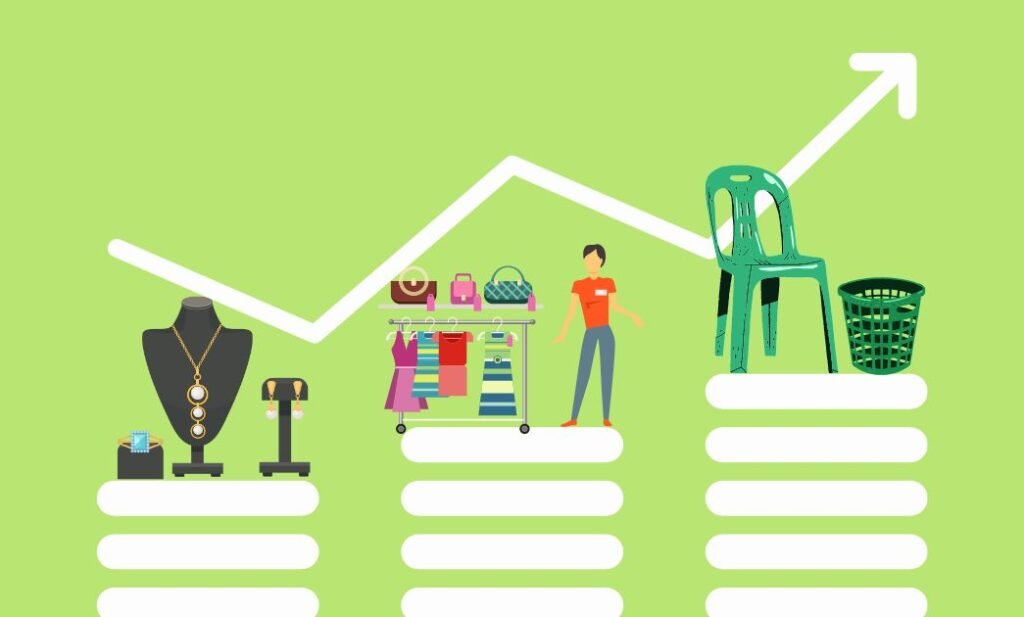Retail inflation in India has been a persistent challenge, impacting not just the economic framework but also the lives of everyday consumers. The retail inflation rate not only captures the rising or falling prices of essential goods and services but also holds significant implications for the broader economic ecosystem.
Over the years, the retail inflation rate in India has grappled with fluctuations, exerting a profound influence on consumer purchasing power and key policies. Let’s dive into the current scenario, the latest trends and the impact of retail inflation on consumers and the economy.
Navigating retail inflation rates in India
The retail inflation rate in India is measured by the Consumer Price Index (CPI), which tracks the changes in the prices of a basket of goods and services consumed by households.
The Wholesale Price Index (WPI), on the other hand, covers a broader range of goods, including primary articles, fuel and power, and manufactured products. WPI also offers insights into the price movements at earlier stages of the supply chain and can reflect inflationary pressures in the production and distribution processes.
RBI’s role in retail inflation rate in India
The Reserve Bank of India (RBI) sets a target for retail inflation to maintain price stability and support sustainable economic growth. However, the retail inflation rate can be influenced by several factors, such as changes in food prices, fuel costs, global commodity prices, exchange rates, government policies, and demand-supply dynamics.
The RBI’s target for retail inflation is to keep it around 4%, with a tolerance band of plus and minus 2%. This means that inflation should ideally be within the range of 2% to 6%.
Recent trends in retail inflation
- Declining retail inflation: April 2023 records an 18-month low
In April 2023, the retail inflation rate in India reached an 18-month low of 4.70%, according to data from the Reserve Bank of India (RBI). This marked a significant decrease from the previous months, where the inflation rate stood at 5.66% in March, 6.44% in February, and 6.52% in January 2023.
-
Food inflation in various categories
There’s a notable deflationary trend within food items, particularly in the vegetable, meat and fish and oil category.
The prices of vegetables continued to decrease, with a rate of –6.50% in April 2023. In March 2023, the rate was -8.51%, and in February 2023, it was -11.61%. Similarly, prices of meat and fish continued to decrease, with a rate of -1.23%, compared to -1.42% in March 2023 and 3.39% in February 2023.
However, milk prices remained high, with an inflation rate of 8.85% in April 2023. Additionally, the prices of eggs increased by 3.30% in April 2023 from 4.41% in March 2023 and 4.32% in February 2023. Cereal prices remained a major concern, eyeing a rate of 13.67% inflation.
On a side note, the Wholesale price inflation declined to -0.92% in April 2023, from 1.34% in March 2023, as per GOI records.
Take control of your finances with Paytm! In the face of retail inflation challenges, empower yourself to make smarter financial decisions. Explore Paytm’s range of convenient and secure services that help you manage your money efficiently.
Inflationary waves: Impact on consumers and economy
The impact of the retail inflation rate in India on consumers and the economy is multifaceted. As prices escalate, the purchasing power of individuals diminishes, eroding their ability to meet their daily needs and impacting their overall standard of living. In the same light, the recent spike in food inflation in certain categories is a concern as it directly affects households’ budgets, particularly in a country like India, where a significant portion of income is spent on food.
Retail inflation also carries implications for the broader economy. It can affect investment decisions as entrepreneurs and businesses grapple with the uncertain operating environment created by inflationary pressures.
Addressing retail inflation encompasses measures such as actionable fiscal policies, effective regulation, and robust monetary frameworks. Striking a delicate balance between economic stability and consumer welfare remains a constant endeavour as policymakers navigate supply and demand dynamics, wage trends, and market expectations.
Conclusion
Looking ahead, the projections for retail inflation in the coming fiscal year show cautious optimism. Striking a balance between managing inflation and promoting economic growth remains a key challenge for policymakers. However, with anticipated moderation in inflation rates, there is hope for further economic stability and improved consumer affordability.
